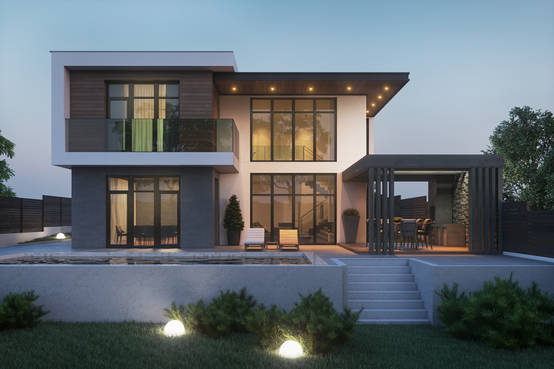
Image source: Google
Living in a small space doesn't mean you have to compromise on style and comfort. With the right design tips and tricks, you can make the most of your compact living area and create a cozy and inviting home. Whether you're living in a studio apartment, a tiny house, or just have a small room to work with, these home design tips will help you maximize your space and make it feel larger and more functional.
1. Declutter and Organize
One of the first steps to maximizing a small space is to declutter and organize. By getting rid of items you no longer need and finding creative storage solutions for the things you want to keep, you can create a more open and airy atmosphere in your home.
Some tips for decluttering and organizing include:
- Use multi-functional furniture pieces with built-in storage.
- Utilize vertical space with shelves and wall-mounted storage units.
- Invest in bins, baskets, and containers to keep smaller items organized.
- Regularly review and purge items to prevent clutter from accumulating.
2. Choose the Right Furniture
When it comes to furnishing a small space, choosing the right furniture is key. Opt for pieces that are scaled to fit your space and have a streamlined design to prevent the room from feeling crowded. Look for furniture that serves multiple purposes to maximize functionality in a small area.
Consider the following when selecting furniture for a small space:
- Choose a sofa with a slim profile and raised legs to create a sense of lightness.
- Use transparent or glass furniture to maintain an open feel.
- Select furniture pieces with hidden storage options.
- Consider modular or folding furniture that can be easily adjusted or stored away when not in use.
3. Utilize Light and Neutral Colors
Light and neutral colors can help make a small space feel larger and brighter. By using a cohesive color scheme throughout your home, you can create a sense of continuity and openness. Additionally, incorporating reflective surfaces and strategic lighting can further enhance the illusion of space.
Here are some ways to incorporate light and neutral colors into your small space:
- Paint walls in light shades such as white, cream, or soft pastels.
- Choose furniture and decor in neutral tones like beige, gray, or light wood finishes.
- Hang mirrors to reflect light and create the illusion of depth.
- Use sheer curtains to allow natural light to filter into the room.
4. Create Zones for Different Functions
Even in a small space, it's important to designate separate areas for different functions to maximize usability. By creating distinct zones for living, sleeping, working, and dining, you can better utilize your space and make it feel more organized and purposeful.
Here are some ways to create functional zones in a small space:
- Use area rugs or furniture arrangement to define different areas within a room.
- Install room dividers or curtains to separate spaces when needed.
- Choose furniture that can be easily reconfigured to adapt to different activities.
- Opt for dual-purpose furniture like a dining table that can also serve as a workspace.
5. Embrace Minimalism
Embracing a minimalist approach to design can be especially beneficial in a small space. By focusing on quality over quantity and prioritizing essential items, you can create a clean and clutter-free environment that feels spacious and serene.
Tips for incorporating minimalism into your small space:
- Keep decor simple and uncluttered with a few well-chosen pieces.
- Avoid overcrowding shelves and surfaces with excessive knick-knacks.
- Opt for furniture with clean lines and a minimalist aesthetic.
- Regularly edit and curate your belongings to maintain a minimalist lifestyle.
